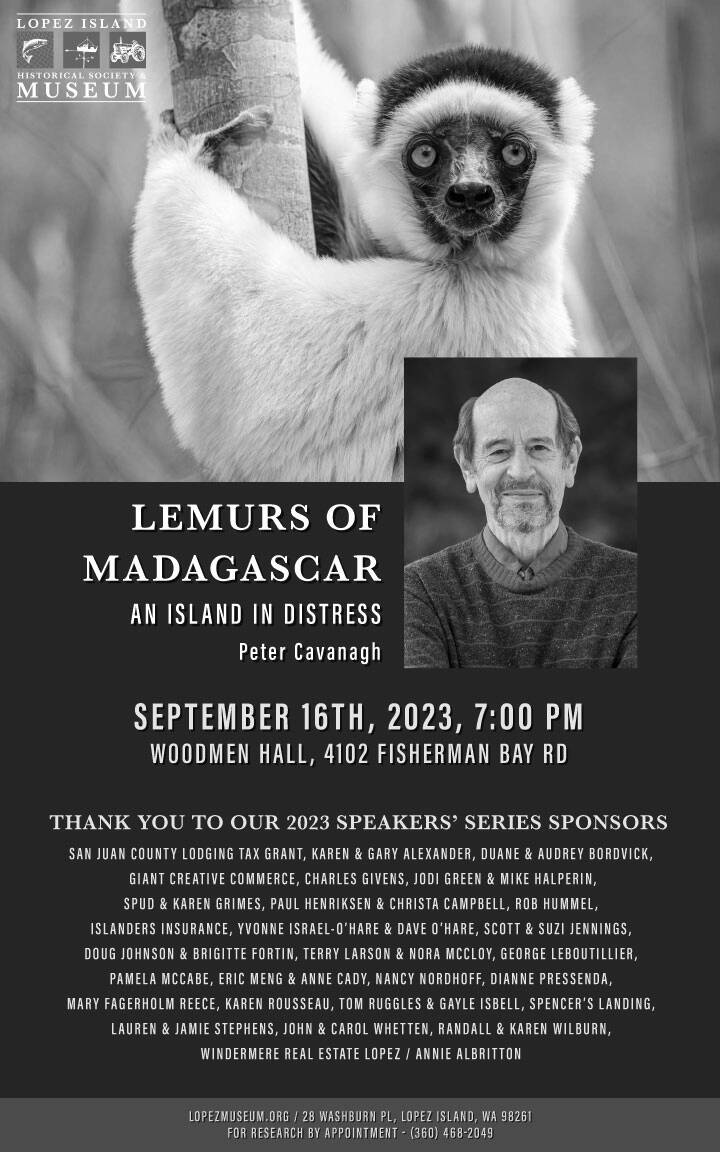“Lemurs of Madagascar: Island in Distress” will be presented on Saturday, Sept. 16, 7-8:30 p.m. at Woodmen Hall.
Madagascar is an island the size of France in the Indian Ocean, about 700 miles east of Mozambique. It was formed 125-84 million years ago following the fragmentation of the supercontinent Gondwana. Madagascar and its outlying islands are the only places in the world where lemurs can be found in the wild. There are over 100 species of these unique primates in existence today and most experts believe that almost all of them are on the fast track to extinction, with more than 30% of species already listed as critically endangered on the IUCN Red List.
The fate of lemurs is inextricably linked to the harsh economic conditions experienced by the island’s 29 million inhabitants. 75% of Malagasy people live below the poverty level and only 5% of rural communities have access to electricity. Wood fires and charcoal stoves are the most common form of heating and cooking, and lemurs live almost exclusively in increasingly fragmented forests. The survival of humans and lemurs are therefore presently in direct conflict.
For the photographer, these charismatic and diverse animals are irresistible targets. They often gaze curiously at the intruding human before leaping between branches with astonishing power and acrobatic skill.
Amongst the most fascinating species are Verreaux’s Lemurs (Propithecus verreauxi) — sometimes called “dancing lemurs” because they can only move on the ground between trees with a sideways hopping movement. The mythologized Aye-Aye (Daubentonia madagascariensis) has curiously elongated fingers to excavate insects and fruit, while the plaintive cry of the Indri (Indri indri) adds a mystical dimension to the forest. Families of Ring-tailed Lemurs (Lemur catta) can be seen basking in the morning sun, while night walks reveal the large saucer-like eyes of mouse lemurs (Microcebus).
In his presentation at Woodmen Hall, on Sept. 16, wildlife photographer Peter Cavanagh will show photographs and movies of Lemurs in the wild and he will speculate about possible solutions to their presently dire prospects for survival.



